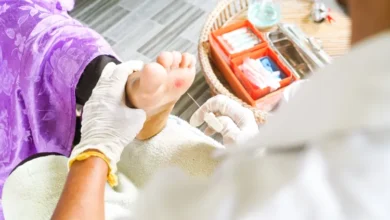Type 1 Diabetes Patients Off Insulin After a Single Dose of Experimental Manufactured Stem Cells
Zimislecel Therapy Eliminated the Need for Insulin in Most Participants With Severe Diabetes

A single infusion of Zimislecel stem cell therapy allowed several participants with severe type 1 diabetes to stop using insulin entirely, according to results from an early-stage clinical trial. One of them, Amanda Smith, a 36-year-old nurse in London, Ontario, says she no longer needs insulin six months after receiving the treatment.
The therapy, known as zimislecel, is made from lab-grown islet cells developed from pluripotent stem cells. These engineered cells are designed to replace the insulin-producing beta cells destroyed in people with type 1 diabetes. In the study, the cells were delivered into patients’ livers through the portal vein and began producing insulin naturally.
A Small but Promising Study

The trial, conducted by Vertex Pharmaceuticals, involved 14 participants. All had type 1 diabetes with no measurable C-peptide at baseline, indicating an absence of natural insulin production. Of the 12 individuals who received the complete zimislecel infusion, 10 no longer required insulin a year later.
Each participant showed signs of functioning islet cells and avoided any serious hypoglycemic incidents during the last nine months of follow-up.
The trial results, presented at the 2025 American Diabetes Association conference and published in The New England Journal of Medicine, point to zimislecel as a possible treatment route for patients with difficult-to-manage or advanced type 1 diabetes.
Restoring Natural Insulin Production
Participants in the trial had previously lived with hypoglycemic unawareness, a complication where the body no longer warns of dangerously low blood sugar levels. This can result in sudden fainting, seizures, or even death. Following treatment with a full dose of zimislecel, none of the 12 participants experienced additional episodes of dangerously low blood sugar.
The infusion triggered insulin production within weeks. Patients began reducing their insulin requirements around the three-month mark, with most stopping entirely by month six. All participants spent more than 70 percent of their time in the recommended blood glucose range between 70 and 180 mg/dL.
Amanda Smith described the experience as a return to normalcy. She joined the study after years of managing her blood sugar around the clock. The result, she said, has been “a whole new life,” though she remains on immunosuppressive medication to preserve the function of the transplanted cells.
Managing the Risks of Immune Suppression
To prevent the body from rejecting the implanted cells, all participants were placed on immunosuppressive drugs. While these medications were chosen to avoid corticosteroids, they still carry risks.
Three participants developed neutropenia, a condition that weakens the immune system, and two died during the study’s follow-up period. One death was linked to fungal meningitis, and the other to worsening dementia. Both patients had underlying medical conditions before entering the trial.
Researchers acknowledged these risks and emphasized the importance of long-term monitoring. “We’re still learning what this means over the course of many years,” said Dr. Trevor Reichman, pancreas and islet transplant program director at University Health Network in Toronto and lead author of the study.
Built on Decades of Research
Zimislecel is the result of over two decades of work, beginning with a Harvard lab led by Dr. Doug Melton. Motivated by his children’s diagnoses with type 1 diabetes, Dr. Melton focused his career on transforming stem cells into functioning islet cells. After finding a reliable method, the research was taken forward by Vertex Pharmaceuticals for clinical development.
The trial was limited to patients with severe diabetes who could not manage their condition effectively with current therapies. Enrollment was selective, and some eligible patients declined participation after learning they would need immunosuppressive drugs for life.
A New Option for a High-Risk Group
Dr. Irl Hirsch, a diabetes expert from the University of Washington who was not affiliated with the research, observed that the therapy may serve a critical role for patients at high risk of sudden and severe glucose drops. He added that for patients with well-managed type 1 diabetes, the trade-offs may not be worth the risk until safer long-term data become available.
Zimislecel is not yet approved for public use, and pricing has not been disclosed. Vertex plans to continue testing zimislecel in future studies and aims to submit its findings to the U.S. Food and Drug Administration for review.
For patients like Amanda Smith, the therapy represents a shift in what diabetes care could look like. Though not a cure, zimislecel shows that it may be possible to restore the body’s own insulin production with a single intervention—at least for those who need it most.
[Source]








